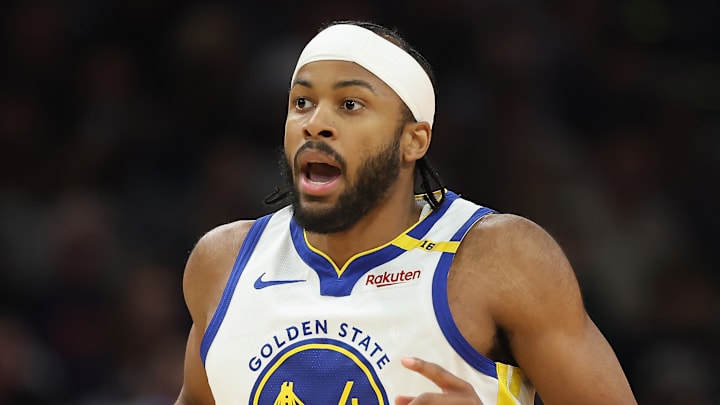Moses Moody and the Golden State Warriors agreed on a three-year, $39 million contract extension at the start of the season, removing the young wing from potential restricted free agency this summer.
Part of that deal includes nearly half a million dollars in annual "unlikely incentives" tied to performance benchmarks. This week, as the regular season wrapped up, Moody’s contract incentives came down to the wire. Fortunately for the Warriors, he narrowly missed the mark on one of his targets, keeping the incentives classified as “unlikely”.
Moses Moody’s narrowly missed contract incentives
NBA reporter John Hollinger of The Athletic reported that Moody’s extension includes three key statistical targets that would trigger bonus payouts starting next season: Playing at least 1,600 minutes, attempting at least nine three-pointers per 100 possessions, and achieving a true shooting percentage (TS%) of 60% or better.
While the incentives won’t officially pay out until the 2025–26 season, hitting those benchmarks this year would have reclassified them from “unlikely” to “likely,” increasing Moody’s projected cap hit for the Warriors in future seasons.
Under NBA salary cap rules, contract bonuses are categorized based on whether a player achieved the specific benchmarks in the prior season. If a player met the criteria, the incentive is considered “likely” and counts against the salary cap immediately when the contract is signed. If the player did not achieve the incentive previously, it is considered “unlikely” and does not count against the cap up front.
However, if the player hits the benchmark during the season, the incentive is paid out and retroactively applied to the team’s cap at the end of the year, which can affect luxury tax calculations and financial flexibility. In Moody’s case, he hadn’t hit any of the benchmarks before this season, so all three incentives were labeled as “unlikely” when the contract was signed. If he had reached them this season, they would have been reclassified as “likely” for the 2025–26 season, impacting the Warriors' future cap sheet regardless of whether he repeats the performance.
Moody’s final numbers for the 2024–25 regular season were 9.8 points (career-high), 2.6 rebounds, and 1.3 assists (career-high) on 37.4% shooting from three (also a career-high). He managed to hit two of the three benchmarks, coming up short primarily due to a late season shooting slump. He ended the season shooting just 57.8% true-shooting after going 11-of-37 from the field and 5-of-19 from three over his last five games.
Moody’s 2024–25 season was still a step forward. If he continues to develop and earns a larger role next season, he’ll be in a prime position to hit those incentive benchmarks when the money is actually on the line. Golden State has every reason to prioritize his growth and find ways to keep him on the floor. If they do, this time next year we could be talking about how Moody finally cashed in on his well-earned bonuses.
